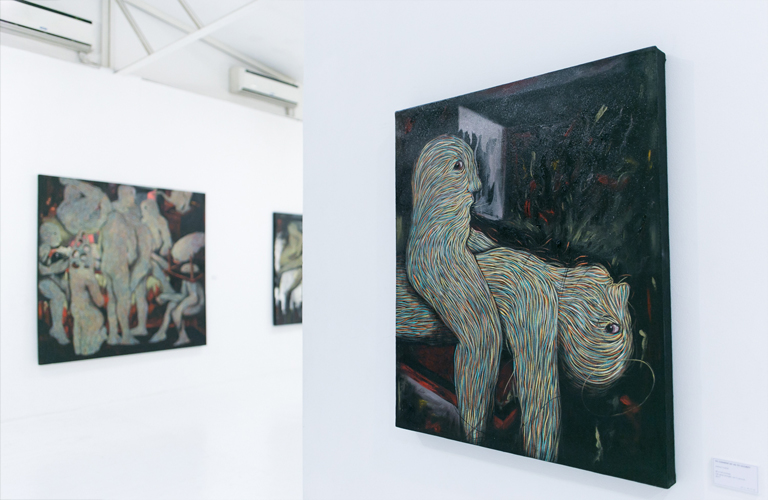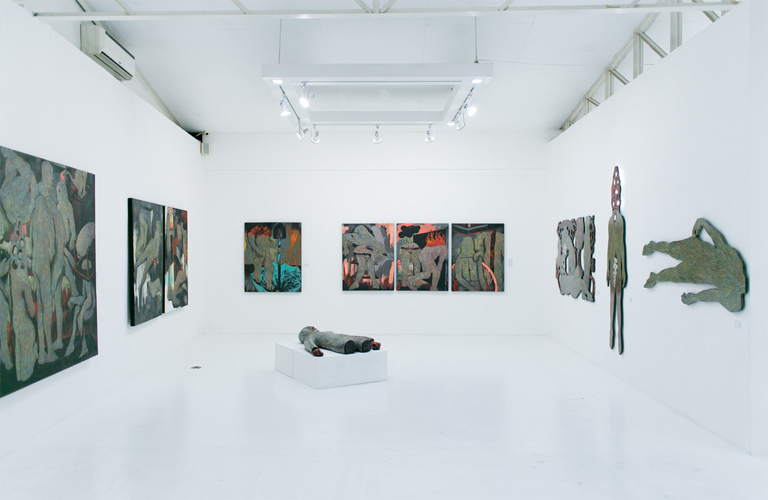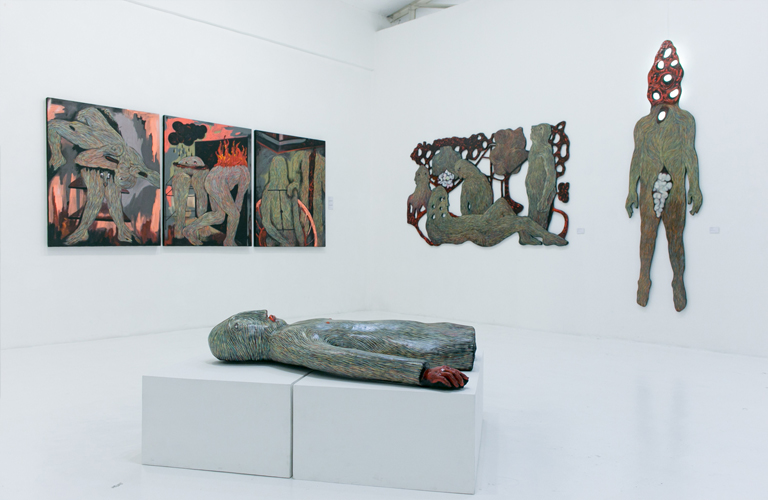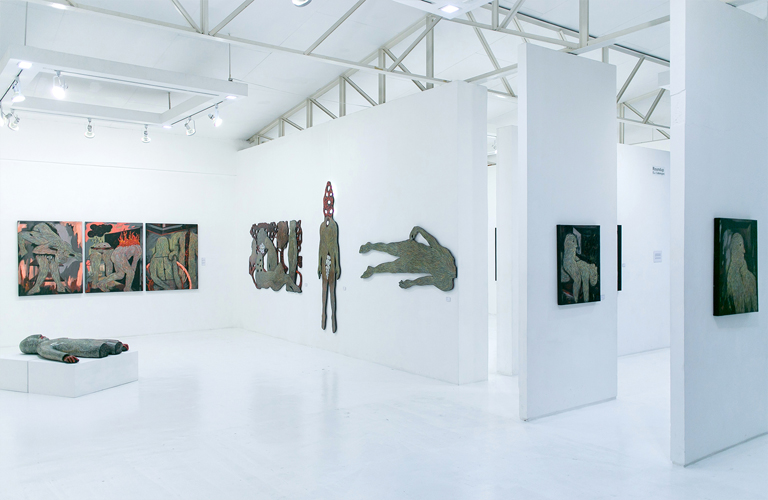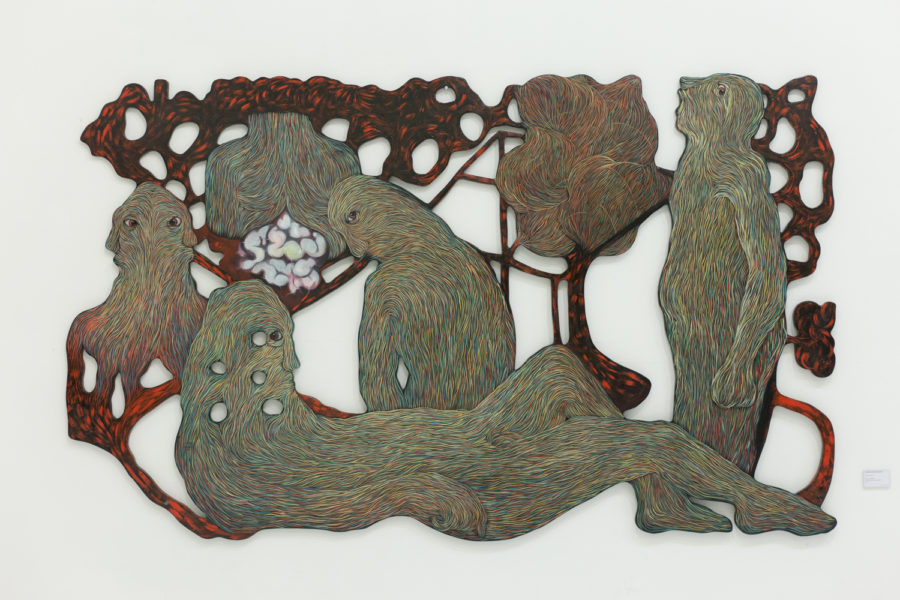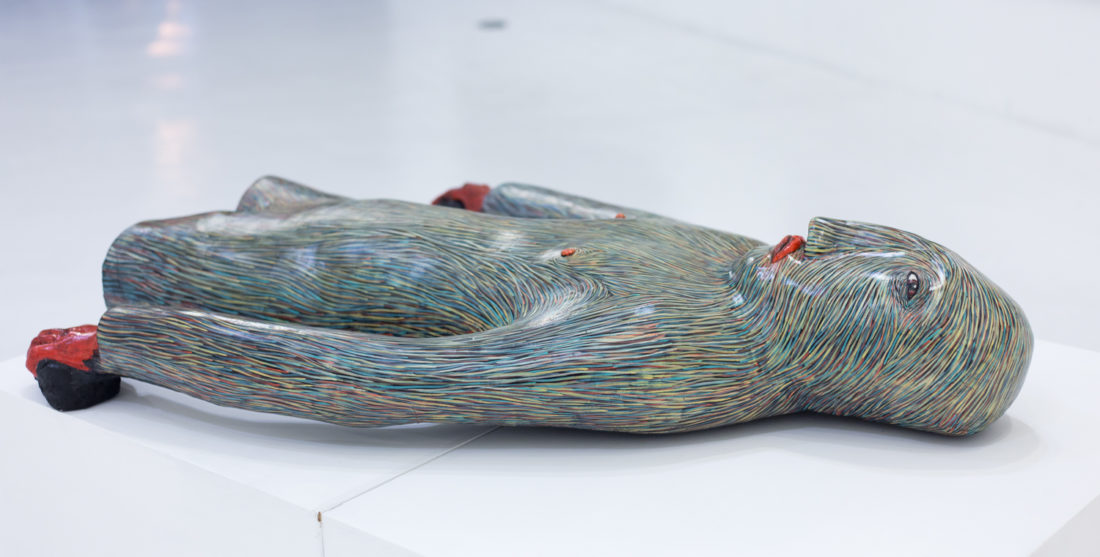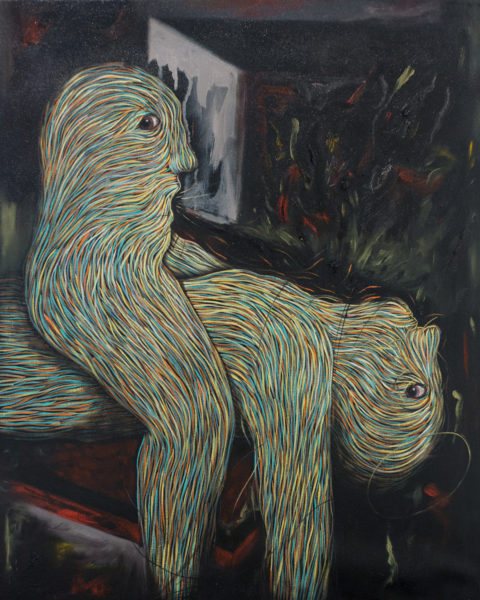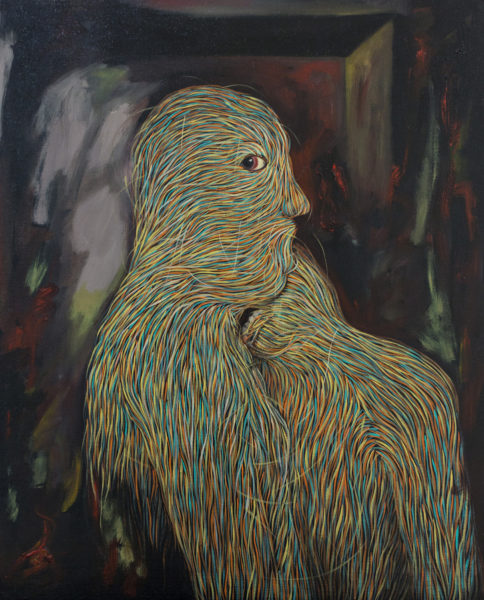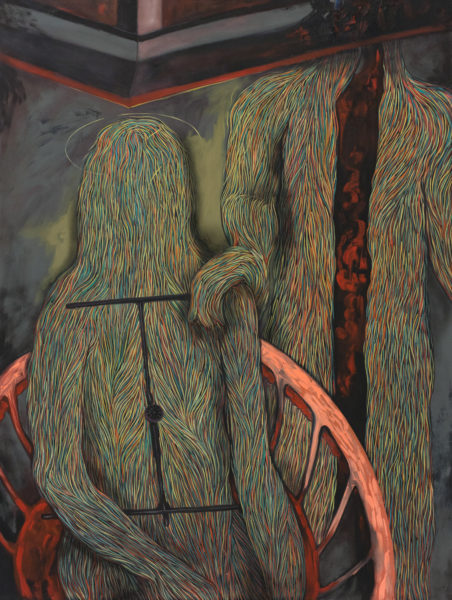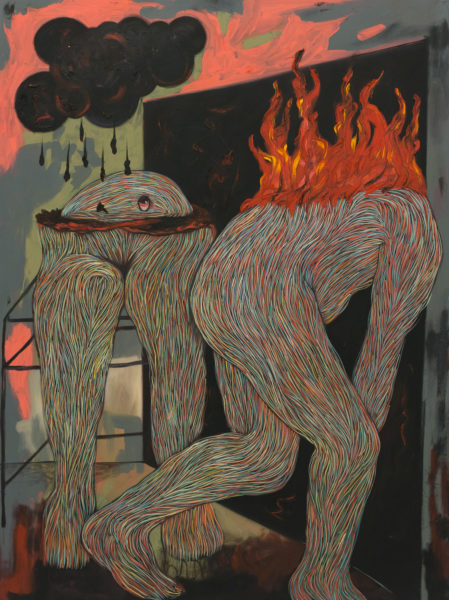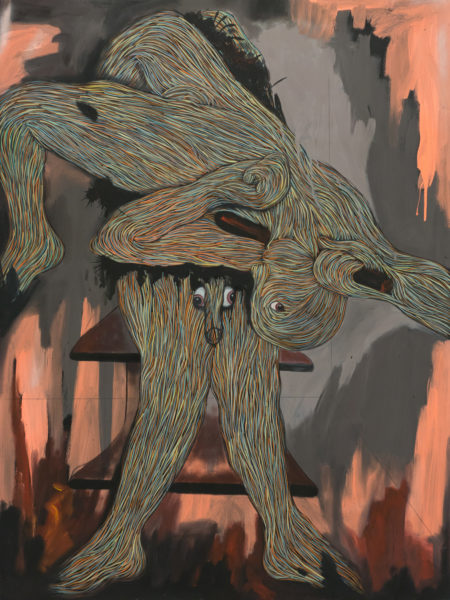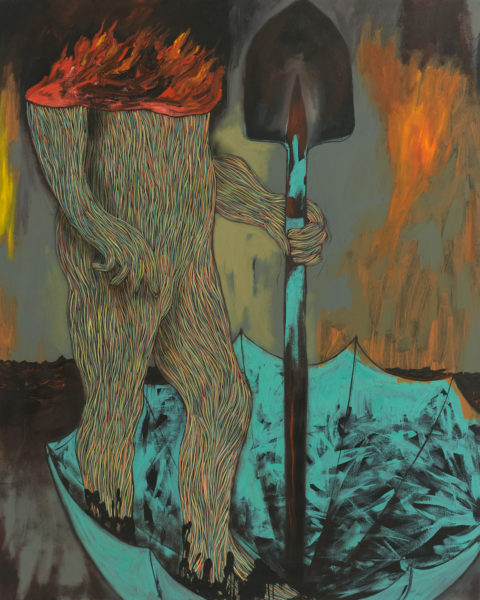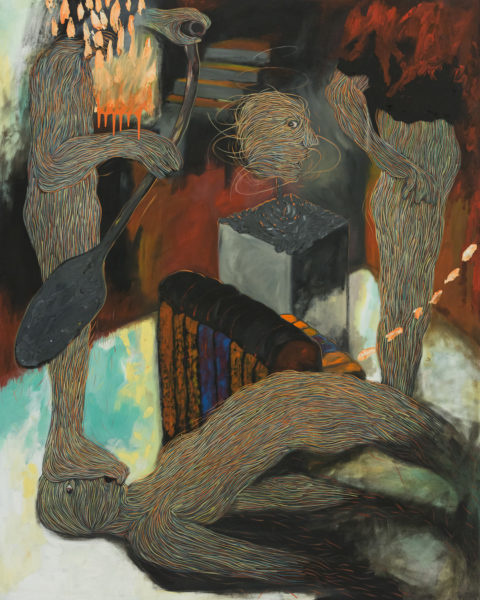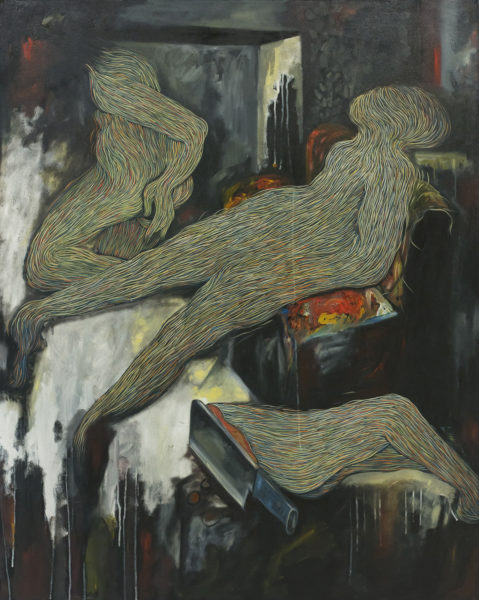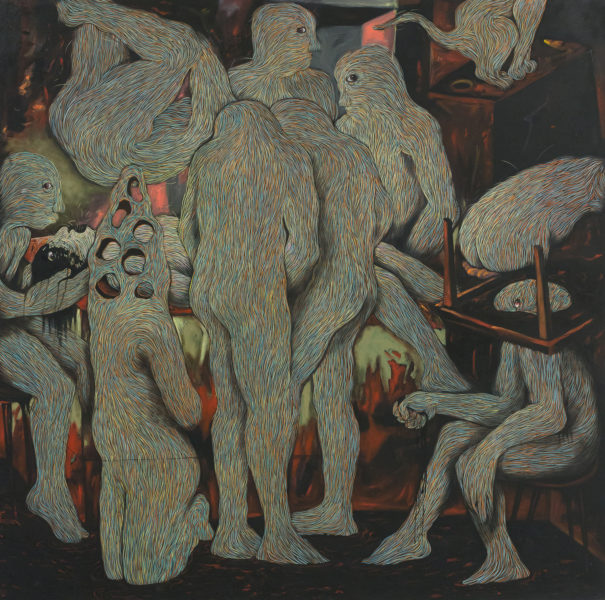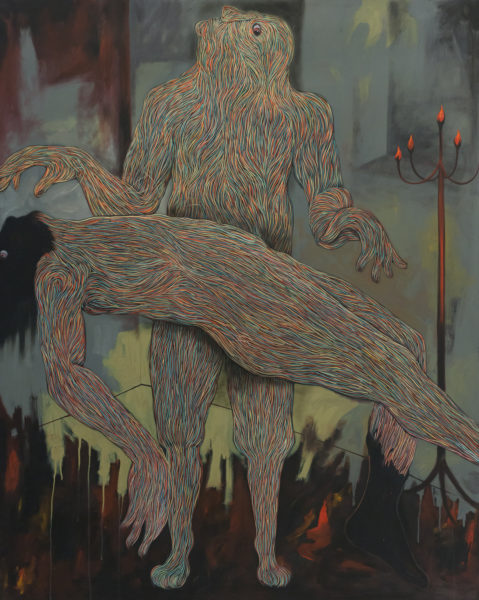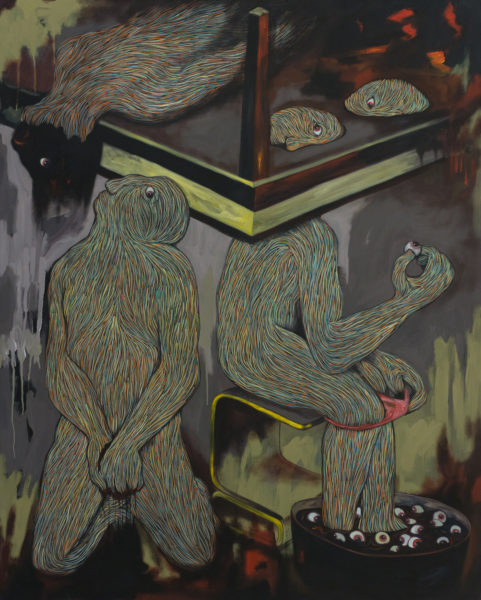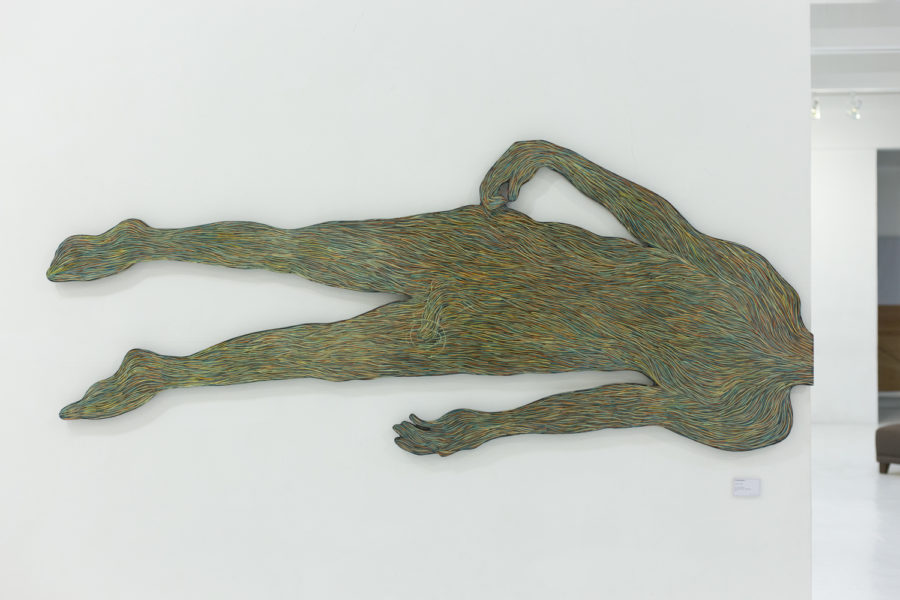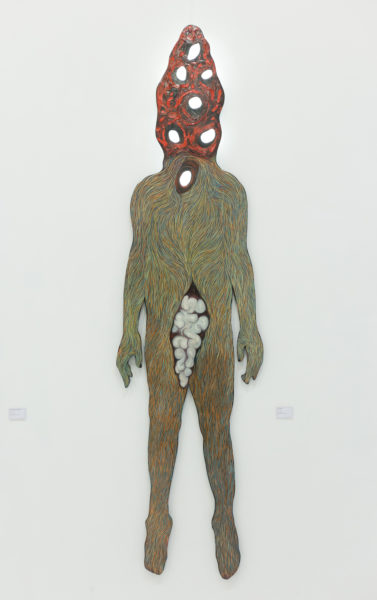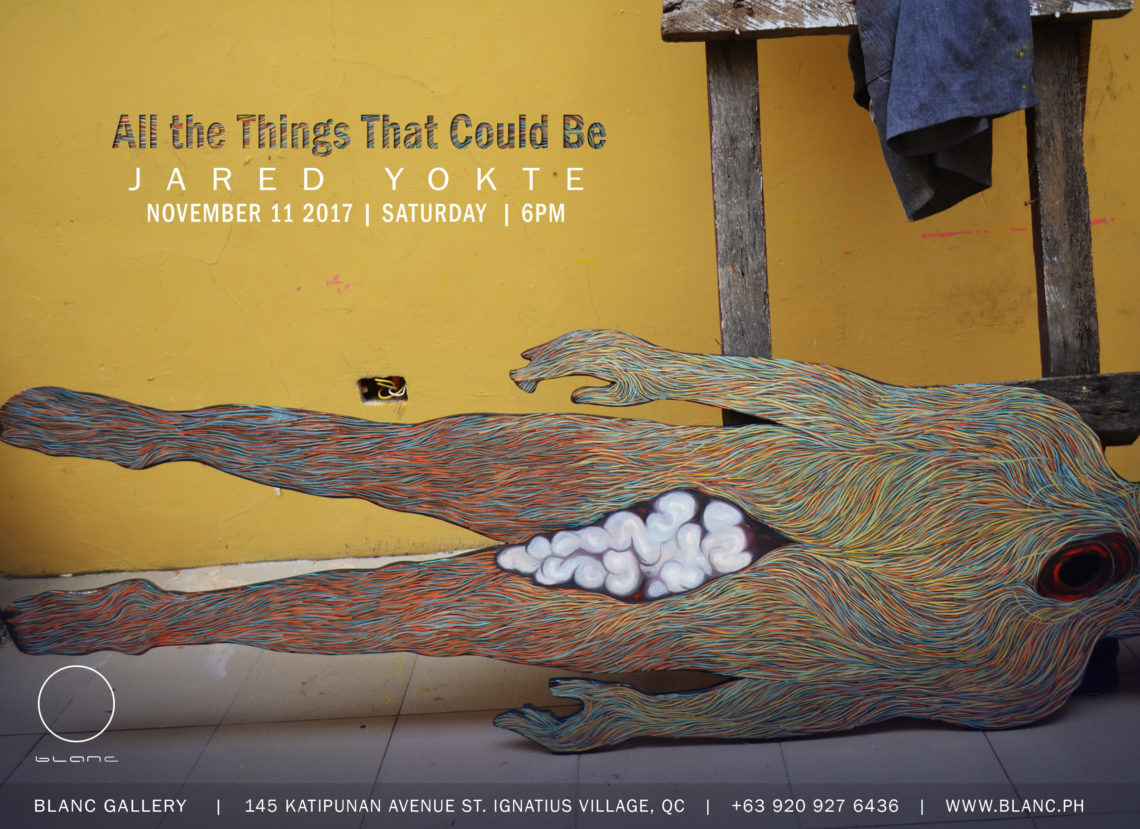
Jared Yokte’s mind sees what his eyes don’t. And his hand paints what his brain doesn’t. All the Things That Could Be is an exhibition born of surrealist automatism, where the subconscious is king. The superego and ego, the moral and rational parts of the Freudian psyche, allow the id to cavort unfettered on the canvas. Bodies spun out of unspooled thread—wriggling rainbow spaghetti—burn, levitate, and melt. A decapitated figure contemplates an eyeball. A torso, cleaved from its legs, goes missing and leaves its lower half on the chopping block.
Yokte paints at night, in a metaphorical room of his own making. His “self” splits along fault lines: the higher-functioning architect/director floats above, observing without passing judgement on the impulsive passions that move his limbs. All the Things That Could Be shows this temporary madness in a pair of works titled The Creator and The Recipient. The first stands upright with a head full of holes. All guts, all glory. Visceral. The head disconnected from deliberate thought. The second lies waiting, an empty vessel ready and willing to be used. When all inner critics and censors are silenced, free association can take place. Everything is fair game. Nothing, as Freud said, is “too disagreeable or too indiscreet… too unimportant or irrelevant… or nonsensical.”
German poet and philosopher Friedrich Schiller was acquainted with the free associative state Freud described, writing earlier on about the stifling consequences of overanalyzing ideas: “It seems a bad thing and detrimental to the creative work of the mind if Reason makes too close an examination of the ideas as they come pouring in—at the very gateway, as it were. Looked at in isolation, a thought may seem very trivial or very fantastic; but it may be made important by another thought that comes after it, and, in conjunction with other thoughts that may seem equally absurd, it may turn out to form a most effective link. [. . .] [W]here there is a creative mind, Reason—so it seems to me—relaxes its watch upon the gates, and the ideas rush in pell-mell…”
Many have used this technique of abandoning criticality (known by different names in different contexts), always with interesting results. James Joyce’s stream-of-consciousness writing in Ulysses—in particular, the paragraph that contain the phrase “possibilities of the possible as possible”—illuminates Yokte’s exhibition title (All the Things That Could Be):
Here he ponders things that were not: what Caesar
would have lived to do had he believed the soothsayer:
what might have been: possibilities of the possible as
possible: things not known: what name Achilles bore
when he lived among women.
In the dead of the night, alone and tapped into his subconscious, Yokte was able to address private issues. He notes that this solo exhibition is his most personal one to date and yet, the meanings of these paintings are beside the point. Instead, it is process—automatism—that he wishes to highlight.
Gertrude Stein, another ally of experimental free writing, wrote a portrait of dancer Isadora Duncan titled Orta or One Dancing:
In being one dancing this one is one being one remembering anything in dancing. In being one dancing this one is one remembering something in dancing. In being one dancing this one was dancing and dancing being that thing being dancing this one was doing that thing was doing dancing. In being one dancing this one was one being dancing. In being dancing this one was dancing. In dancing this one was dancing.
Change the verb “dancing” to “painting” and one gets a glimpse of the temporary madness Yokte experiences for his art.
In being one painting this one is one being one remembering anything in painting. In being one painting this one is one remembering something in painting. In being one painting this one was painting and painting being that thing being painting this one was doing that thing was doing painting. In being one painting this one was one being painting. In being painting this one was painting. In painting this one was painting.
Works
Documentation
